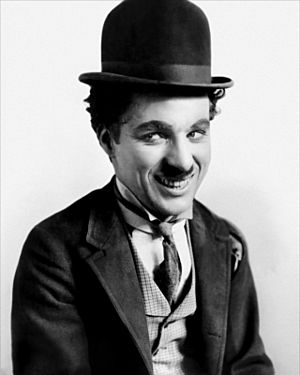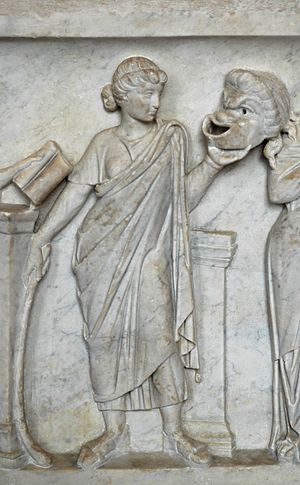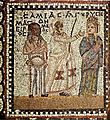Comedy facts for kids


Comedy comes from the Greek word "Kōmōdía." It means something that is funny and makes people laugh.
Today, we use the word "comedy" in a few ways:
- A comedy can be a theatre play that is usually funny and has a happy ending. This idea started in Ancient Greece.
- It also describes television shows or movies that are silly, funny, or make you laugh.
- Comedies can also feature people telling jokes and funny stories. People who perform in comedies are called comedians or comedic actors.
Contents
The History of Comedy
Early Comedy: Satire
The ancient Greeks had comedy plays. These plays were often part of competitions at big festivals like the Dionysia.
One of the most famous Greek comedy writers was Aristophanes (around 446–386 BC). One of his plays, The Clouds, was first performed in 425 BC. It was a type of comedy called satire.
Satire is when a writer uses humor to criticize society or real people. For example, The Clouds made fun of the famous philosopher Socrates.
Later Comedy: Humour
Later, a new type of comedy appeared, sometimes called 'New Comedy'. This style was not about criticizing people or ideas. Instead, it showed characters in funny everyday situations.
The most important Greek writer of this type was Menander. In Rome, the best-known comedy writer was Plautus. He often used Greek comedies as inspiration for his own plays.
Shakespearean Comedy
Many comedy plays were written in the 1500s by the British writer William Shakespeare. Some of Shakespeare's comedies include All’s Well That Ends Well, The Comedy of Errors, and A Midsummer Night's Dream.
For Shakespeare, a comedy did not always mean a play full of jokes. It meant a play where all the problems were solved happily in the end. This was different from a tragedy, where problems usually led to sad endings or death. The two masks, one smiling and one crying, often seen in theatre, represent comedy and tragedy.
Different Kinds of Comedy
Slapstick Comedy
One popular type of comedy is called "slapstick comedy." In slapstick, people do silly physical things to make others laugh. This can include tripping, falling over, or getting into embarrassing situations.
Slapstick comedy was very popular in silent movies from the 1920s. Charlie Chaplin was a famous comedian who used a lot of slapstick humor in his films. Later, in the 1950s and 1960s, Jerry Lewis also used slapstick in his comedy movies.
Comedy Movies
Comedy is a very popular type of movie. Some comedy movies use slapstick humor, as mentioned before. Others tell funny stories or show people behaving in silly ways. Some comedies make audiences laugh by showing strange or unusual things that don't quite make sense.
Parody and Spoof Films
A parody or spoof movie makes fun of another movie, TV show, or even a real person. They do this by imitating and exaggerating something in a funny way to make people laugh.
Mixed Comedy Genres
Some comedy movies combine humor with other types of films:
- A dramedy is a mix of a drama movie and a comedy movie. It has both serious and funny parts.
- A romantic comedy (often called a "rom-com") tells a love story. It mixes the romance with silly or funny situations.
Comedy Television Shows
Comedy shows are very popular on television. Comedy shows on TV are often called "sitcoms." The word "sitcom" is short for "situational comedy." Sitcoms usually show characters doing funny things in everyday situations, which makes the audience laugh.
Related Pages
Images for kids
-
Tragic and Comic Masks from Ancient Greek Theatre, shown in a Roman mosaic.
-
The title page of the first printed edition of Shakespeare's A Midsummer Night's Dream (1600).
-
Edward Lear, Aged 73 and a Half and His Cat Foss, Aged 16, an 1885 drawing by Edward Lear.
-
Charlie Chaplin as "The Tramp" in his 1921 film The Kid.
-
Jim Carrey making a funny face for the camera.
-
Jordan Peele at an awards ceremony.
See also
 In Spanish: Comedia para niños
In Spanish: Comedia para niños









